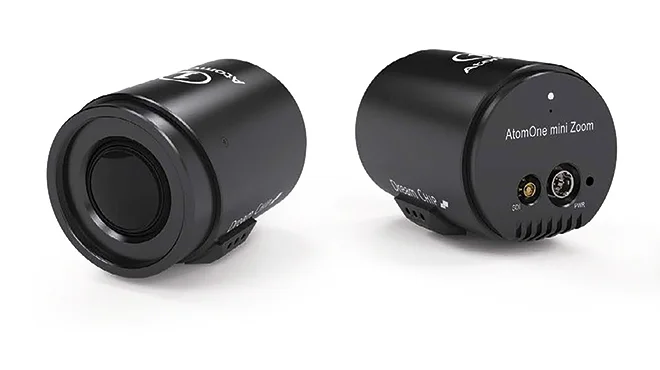For as long as we’ve been telling stories, we’ve been bound by a fundamental law of physics: you can’t be in two places at once. The storyteller stands on the sideline. The audience sits in the stands. We see the event, we feel its echoes, but we are always, inevitably, outside of it. We watch the race car blur past; we don't feel the vibration of the engine through the chassis. We see the winning goal from the stands; we don't see the spray of ice from the skates at the puck's level. This has been the great, unbreachable gap in human experience—the distance between watching and being.
Until now. That gap is closing.
I want you to forget, for a moment, everything you think you know about cameras. Forget the bulky rigs, the long lenses, the operators perched in distant gantries. I want you to picture something impossibly small, a cube barely larger than a stack of business cards, weighing less than a cup of coffee. Now, what if I told you this tiny vessel wasn't just a lens, but a new kind of eye? An emissary we can send directly into the heart of the action.
This is the promise of Dream Chip’s AtomOne Mini Zoom. When I first read the spec sheet—60x80mm, 267 grams, 1080p resolution—I was impressed, of course. It’s a marvel of miniaturization. But it wasn't until I processed the full picture, the combination of its size with its hardened, internally-connected housing and its unique zoom function, that the true scale of the breakthrough hit me. I honestly just sat back in my chair, speechless. They haven't just built a smaller camera; they've built an eye that can ride the storm.
Now, when we hear "zoom," our minds immediately go to a telephoto lens, bringing a distant object closer. But that’s not the paradigm here. The AtomOne is already at the destination. The zoom is for reframing—in simpler terms, it's about subtly adjusting your perspective once you're already in a place no human could ever be. It’s the difference between watching a penalty kick from the stands and watching it from behind the goalie’s net, with the ability to widen the shot to see the kicker’s approach or tighten it to see the goalie’s eyes. It’s a tool for narrative, not just observation.

Imagine it. You’re not just watching the race anymore. You are the race. You’re mounted on the car’s roll cage, the world warping around you at 200 miles per hour, the camera’s internal connections completely shielded from the violent, bone-rattling vibration. You’re seeing what the driver sees, feeling what the driver feels. The boundary is gone. This is empathy, delivered at 60 frames per second.
The Revolution Isn't the Camera, It's the Proximity
The Democratization of Perspective
This is a moment that reminds me of the invention of the portable easel. Before that, painters were largely confined to their studios, recreating landscapes from memory and sketches. But when they could suddenly take their entire toolkit into the field, it gave birth to Impressionism. They could capture light and life as it was happening. It was a revolution not of paint, but of proximity. The AtomOne Mini Zoom is the portable easel for the 21st century. It allows us to take our vision and place it inside the moment.
Of course, with this new power comes a profound responsibility. The ability to place an unblinking, high-definition eye almost anywhere demands a new conversation about privacy and consent. When a camera can be hidden in plain sight, we must be more vigilant than ever about how, where, and why we are recording our world. The tool itself is neutral; its application will define its legacy.
But the potential for good, for connection, is staggering. Think beyond sports. Imagine one of these in a university lecture hall, giving online students a front-row seat. Or in a surgical theater, allowing medical students around the world to see a master surgeon’s technique from a perspective better than being in the room. Or attached to a deep-sea submersible, exploring a world we’ve never seen. This is what Dream Chip’s Christian Kühn was getting at when he said their goal was to "bring audiences closer to the action and allow for the communication of excitement and emotion." He’s not talking about a product feature, he’s talking about a fundamental shift in human connection—it’s about using technology to dissolve distance and share experience in its purest form and that vision is what creates this cascade of possibilities from entertainment to education to scientific discovery.
What happens when we can see anything from anywhere? What new stories will we tell? What new truths will we uncover? We are on the verge of a new visual language, one built not on observing from afar, but on participating from within.
The New Optics of Reality
This is more than a new piece of hardware. It's an invitation. It's a tool that asks us, "Where have you always wanted to go? What have you always wanted to see?" For the first time in history, the only limit to our perspective is our own imagination. We are about to see the world in a way we never have before, and it is going to be absolutely spectacular.
Reference article source:
